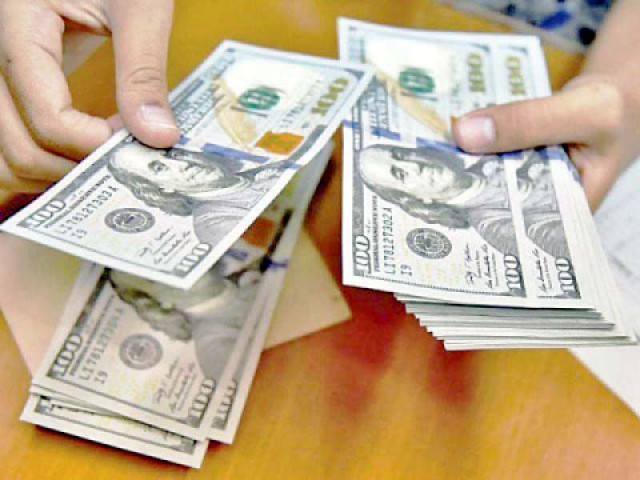Pakistan hints at adopting flexible exchange rate
During talks, IMF had demanded shift from a managed currency regime

Since Pakistan’s economy is heavily dependent on imported goods, the movement in exchange rate carries huge inflationary implications. PHOTO: FILE
“The government is willing to spend political capital for much needed structural reforms …..and it will adopt a flexible exchange rate regime,” said Federal Minister for Planning Khusro Bakhtyar on Monday.
The minister was speaking at the launching ceremony of Pakistan @100 - a World Bank report that has highlighted challenges and suggested a set of reforms that if implemented could increase the size of Pakistan’s economy to $2 trillion by 2047.
Bakhtyar is the second minister to speak about flexible exchange rate policy in less than a week. Finance Minister Asad Umar on Wednesday said the timing and pace of adjustments on flexible exchange rate was a matter of difference between Pakistan and the IMF but now the differences had narrowed down.
Pakistan has decided to implement a market-based flexible exchange rate, said an official of the finance ministry while commenting on the development.
But he insisted that there was no target number in the minds of policymakers and the central bank stands ready to intervene in case of any unusual upward or downward movement.
The government feels that the alignment of exchange rate has already started producing intended results of correction in current account deficits during the past three months to only $356 million in February, the official added.
As part of negotiations for the 22nd bailout package, the IMF had demanded that Pakistan should adopt a free float exchange rate regime. “The free float exchange rate is an ideal scenario but the problem is that Pakistan’s currency market is very thin and could be manipulated due to a complete free float,” said former finance minister Dr Hafiz A Pasha.
He favoured a managed floating exchange rate regime but it should be linked with Real Effective Exchange Rate. Dr Pasha said Pakistan’s real effective exchange rate regime is still positive by 3%, suggesting that the rupee can be further devalued by 3% to achieve the equilibrium. “The flexible exchange rate stops speculations and the free float leads to speculative activities,” he added.
Since Pakistan’s economy is heavily dependent on imported goods, the movement in exchange rate also carries huge inflationary implications. The inflation already increased to 8.2% by end of February.
The IMF was taking an extreme position on the exchange rate due to the almost fixed value of the currency when Ishaq Dar was leading the finance ministry. At that time, the State Bank of Pakistan (SBP) pumped in more than $7 billion to defend the currency value.
'Rupee could easily settle at 150 in next six months'
The rupee traded at 139.40 to a dollar in the inter-bank market on Monday - slightly weakened when compared with Friday closing price. Since December 2018, Pakistan has let its currency weaken by 33%.
In the month of February, the central bank did not pump in dollars in the interbank market aimed at giving a signal to the IMF that it was implementing a flexible exchange rate regime, according to sources.
During discussions with the finance ministry, the sources said the central bank also supported the policy of a more flexible exchange rate. It is better than the current managed exchange rate regime but falls short of the IMF’s demand for a free float.
The sources said the IMF has been conveyed that Pakistan is committed to pursuing flexible exchange rate policy, which will be compatible with the medium-term objectives of the SBP’s institutional arrangements and reserves build-up.
Rupee drops to record low of 139.25 against US dollar
During the talks, the finance ministry admitted that Pakistan’s approach to exchange rate management was at times uneven - reflecting both the realities of a thin foreign exchange market, as well as a desire to avoid unnecessary turbulence in the foreign exchange market. It led to delay in foreign exchange rate adjustments and loss of foreign exchange reserves.
The IMF was further conveyed that the SBP is committed to move forward with a greater flexibility in the exchange rate reflecting the underlying demand-supply conditions of the forex market, and also consistent with a flexible inflation-targeting framework envisaged by SBP in its vision 2020.
The IMF’s new mission chief is arriving in Islamabad this week on his maiden trip. The finance minister said on Monday that Pakistan would request the IMF to send a mission in the second half of April for programme negotiations.
Increase in electricity and gas tariffs are two other outstanding conditions of the IMF. The recent media reports suggest that the government is considering hiking power tariffs by 25% and gas prices by 41% from the next fiscal year.
In case of a deal with the IMF before end of next month, the government will present the next year’s budget in May to make legal changes that are necessary to meet the IMF’s conditions.
Published in The Express Tribune, March 19th, 2019.
Like Business on Facebook, follow @TribuneBiz on Twitter to stay informed and join in the conversation.



















COMMENTS
Comments are moderated and generally will be posted if they are on-topic and not abusive.
For more information, please see our Comments FAQ